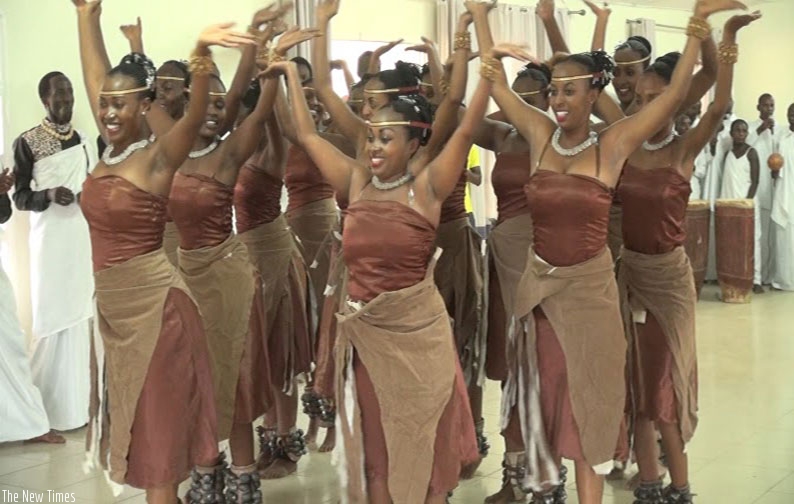Do you know the origin of the popular traditional dance, Igishakamba? Well, growing up in Tooro, in Western Uganda, I used to see young people - both girls and boys - gather in the neighbourhood after dinner to participate in folk songs, Igishakamba and share riddles, in what was known as Ugutarama in Kinyarwanda.


Do you know the origin of the popular traditional dance, Igishakamba?
Well, growing up in Tooro, in Western Uganda, I used to see young people - both girls and boys - gather in the neighbourhood after dinner to participate in folk songs, Igishakamba and share riddles, in what was known as Ugutarama in Kinyarwanda.
In the East African region, just like many parts of Africa, there are multiple ethnic groups with different music traditions, one of which is Igishakamba – a fusion of contemporary-music influences of Burundi, Rwanda, Uganda, Tanzanian and DR Congo.
The dance is performed during weddings, ceremonies and important cultural events. Notably, Igishakamba dancers and drummers, express communal desires, values and collective creativity.
Jean-Damascène Rwasamirera, a historian and an expert in the folk traditions says this type of dance is adaptive practice between the Ekitagururo from Uganda and Umuhamirizo from Rwanda- the two contemporary dances were merged and Igishakamba was born. It was introduced between 1960s-1970s and later spread to Burundi, Tanzania and DR Congo.
Today, Igishakamba is one of the most performed traditional dances in Rwanda and is very popular in Umutara, in the Eastern Province.
Dr Jacques Nzabonimpa, director of Culture, Research, Protection and Promotion unit, says that in the pre- historic Rwanda, people inhabiting a certain place would have their own style of dancing. He cites Ikinimba of the Bakiga people in the South-western part of Uganda, Gutsoma and Ikinyemera of Bagogwe people in north-western region and Igishakakamba of Bahima in south-western Uganda.
He explains that Igishakamba originated from the Bahima of Nkole in Uganda and parts of Karagwe in eastern Tanzania as a result of adaptation that resulted from Rwandans, who lived with in these areas.
Stick, whistle and a drum
Sticks, whistles and a drum are important instruments when performing Igishakamba. While dancing, the male dancers use sticks and whistles, while the female dancers use whistles too.
Traditionally, the sticks are used to guide the performance and the whistles, which create a collective rhythm and allow linguistic meaning to be expressed non-verbally.
Apart from the Igishakamba, there are several other traditional dances in Rwanda like Amaraba, Intore, Ikinimba, Ikinyemera, Inkaranka and Umuhamirizo.
editorial@newtimes.co.rw


